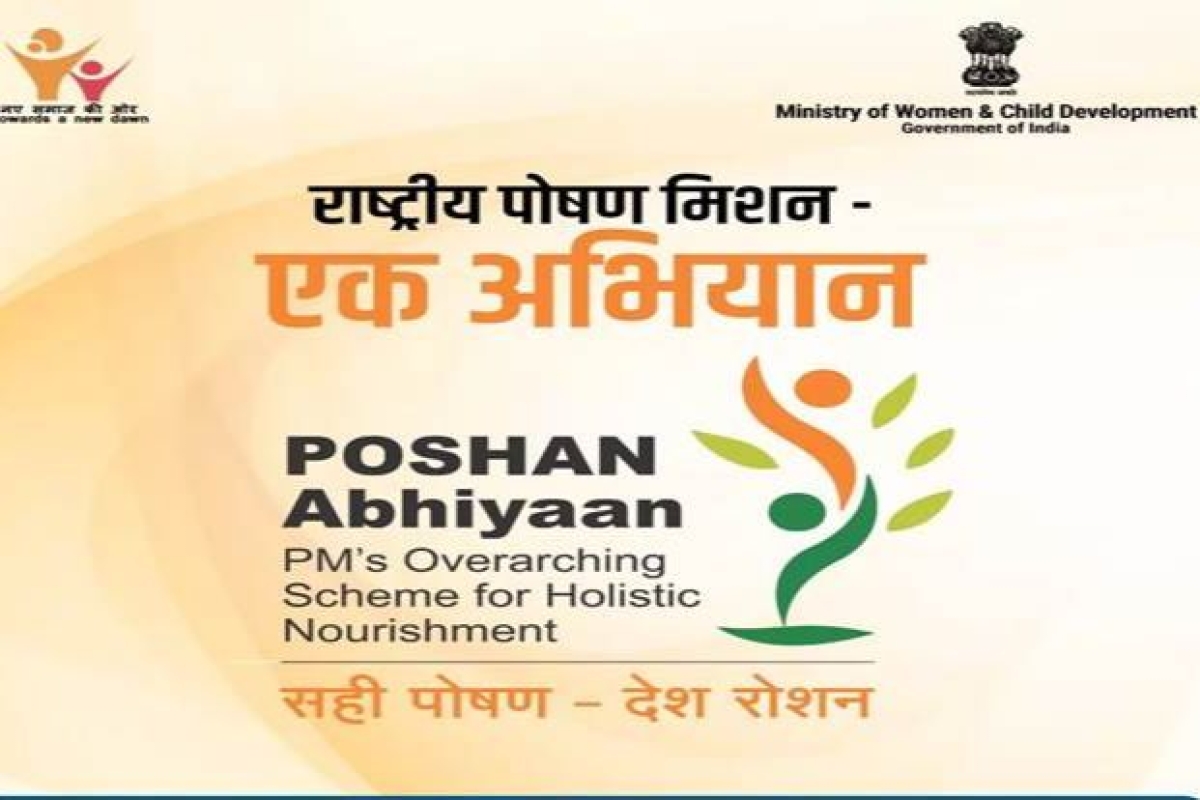
POSHAN ABHIYAAN
CONTEXT:
- NITI Aayog has released a review report on Poshan Abhiyaan. This is the third progress report on the National Nutrition Mission or the Poshan Abhiyaan.
ABOUT POSHAN ABHIYAN
- National Nutrition Strategy laid down the roadmap to launch National Nutrition Mission.
- It is a flagship programme which would be executed with the Ministry of Women and Child Development (WCD) as the nodal ministry along with other ministries like Ministry of Drinking Water and Sanitation, Ministry of Health and Family Welfare etc. which ensures convergence with various programmes.
- TARGETS
o The mission has a target to reduce stunting, undernutrition, and low birth weight by 2 per cent per annum, and anaemia among children (of 6-59 months) and women/adolescent girls (15-49 years) by 3 per cent annually.
o It would also strive to achieve reduction in stunting from 38.4% (NFHS-4) to 25% by 2022 (Mission 25 by 2022).
o It will be implemented in three phases: 2017-18, 2018-19 and 2019-20. 315 ‘high burden’ are to be covered in the first phase, 235 in next and the remaining in last.
- SALIENT FEATURES
o NNM as an apex body will monitor, supervise, fix targets and guide the nutrition related interventions through the life cycle concept.
o Mapping of various schemes contributing under malnutrition
o ICT (Information and Communication Technology) based real time monitoring system.
o Incentivizing states/UTs for meeting targets
o Incentivizing Anganwadi Workers (AWW) for using IT based tools and eliminating the need for registers
o Measurement of height of children at Anganwadi Centres
o Social Audits to track the health progress of the children
o Setting-up Nutrition Resource Centres.
ABOUT THE REPORT
- The third progress report (October 2019-April 2020) takes stock of the roll-out status on the ground and implementation challenges encountered at various levels through large scale datasets.
- These datasets are the NFHS-4 and Comprehensive National Nutrition Survey (CNNS).
- The initial Reports I and II, focused majorly on the mission’s preparedness and implementation by States and UTs, respectively
- Recommendation in report for boosting Poshan Abhiyan
- Complementary feeding
o Complementary feeding interventions are usually targeted at the age range of 6-24 months, because feeding practices over these first few crucial months of a child’s life can critically influence development.
o Content on complementary feeding in existing counselling and behaviour change interventions needs to be focused, salient and sharp
o Re-examine current guidelines on composition and quality of food in the ICDS program.
- Anaemia
o During pre-pregnancy and pregnancy: iron and folic acid supplementation, deworming, and malaria prevention strategies.
o In newborns, infants and in early childhood: delayed cord clamping, exclusive breastfeeding for infants, iron and folic acid supplementation (Map 8), and deworming.
o Across the life-course: fortification or biofortification of staple foods with micronutrients, consumption of diverse diets that include sources of iron and other micronutrients.
o Addressing social determinants such as water and sanitation, education, and poverty alleviation.
- Micronutrient deficiencies
o Have guidelines on areas, like diet diversification, multiple micronutrient supplementation (MMS) and folic acid supplementation.
o Increase the micronutrient content of staples delivered through ICDS, MDM, PDS either through fortification or biofortification.
o Have policies to make fortification mandatory.
o Appoint an expert in micronutrient deficiencies at the State-level as the key contact
person.
o Strengthen the capacity of service providers and manufacturers to address micronutrient deficiencies.
o Standardize monitoring mechanisms for micronutrient interventions across States
and have common target
- On Stunting
o To improve complementary feeding using both behaviour change interventions and complimentary food supplements in the Integrated Child Development Services (ICDS).
o To work towards investments in girls and women (education during childhood, reducing early marriage and early pregnancy, improving care during and after pregnancy) along with other social determinants.
o To improve water, sanitation, handwashing with soap and hygienic disposal of children’s stools with other effective interventions.
- On Wasting:
o To include interventions that go beyond the treatment of severe acute malnutrition (SAM) and also address moderate wasting, have the potential to achieve larger declines in wasting.
o To scale-up to reach facility-based treatment of SAM to all those needing in-patient care.
o To urgently release a full strategy for prevention and integrated management of wasting nationally.
WAY FORWARD
- As the National Nutrition Mission continues to play an important role in India’s endeavour against malnutrition, India needs to now accelerate actions on multiple fronts. The projections are optimistic, and will need to be re-adjusted for the Covid-19 disruptions to health and nutrition services.
- There is a need to quickly graduate to a POSHAN-plus strategy which apart from continued strengthening the four pillars of the mission (Technology, Convergence, Behavioral change and
- Capacity building), also requires a renewed focus on other social determinants in addition to addressing the governance challenges of the National Health Mission (NHM) and ICDS delivery mechanisms.
